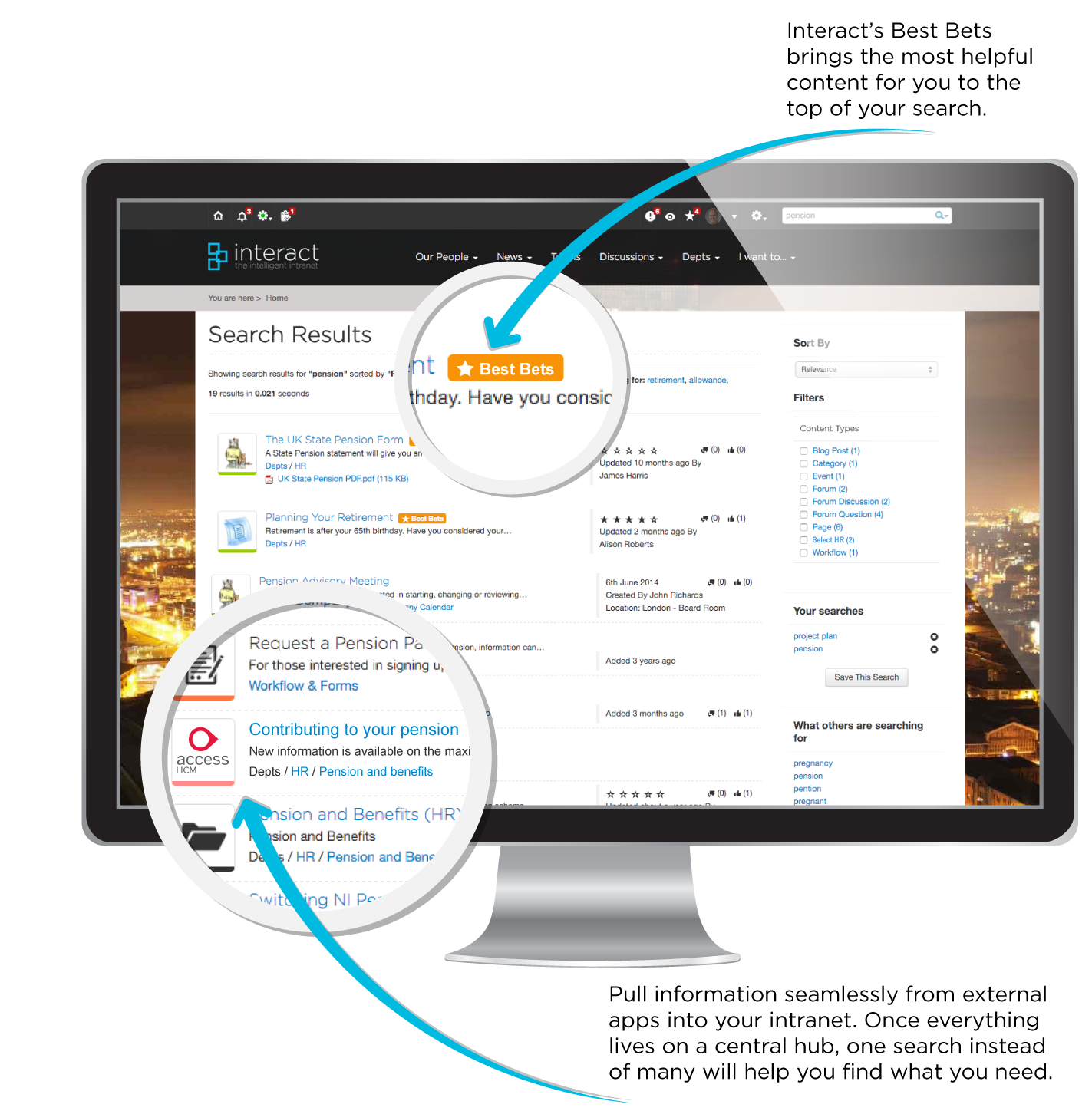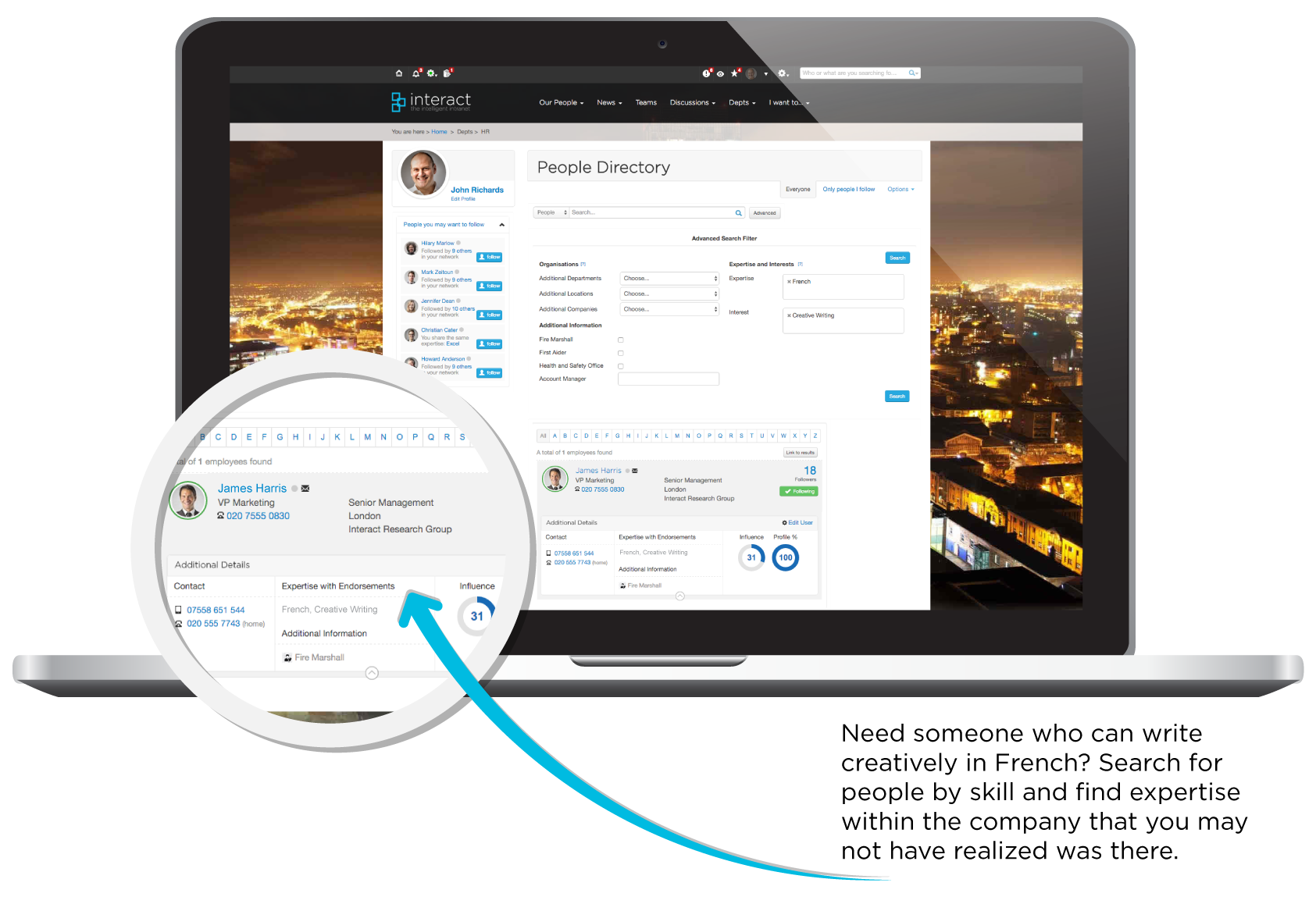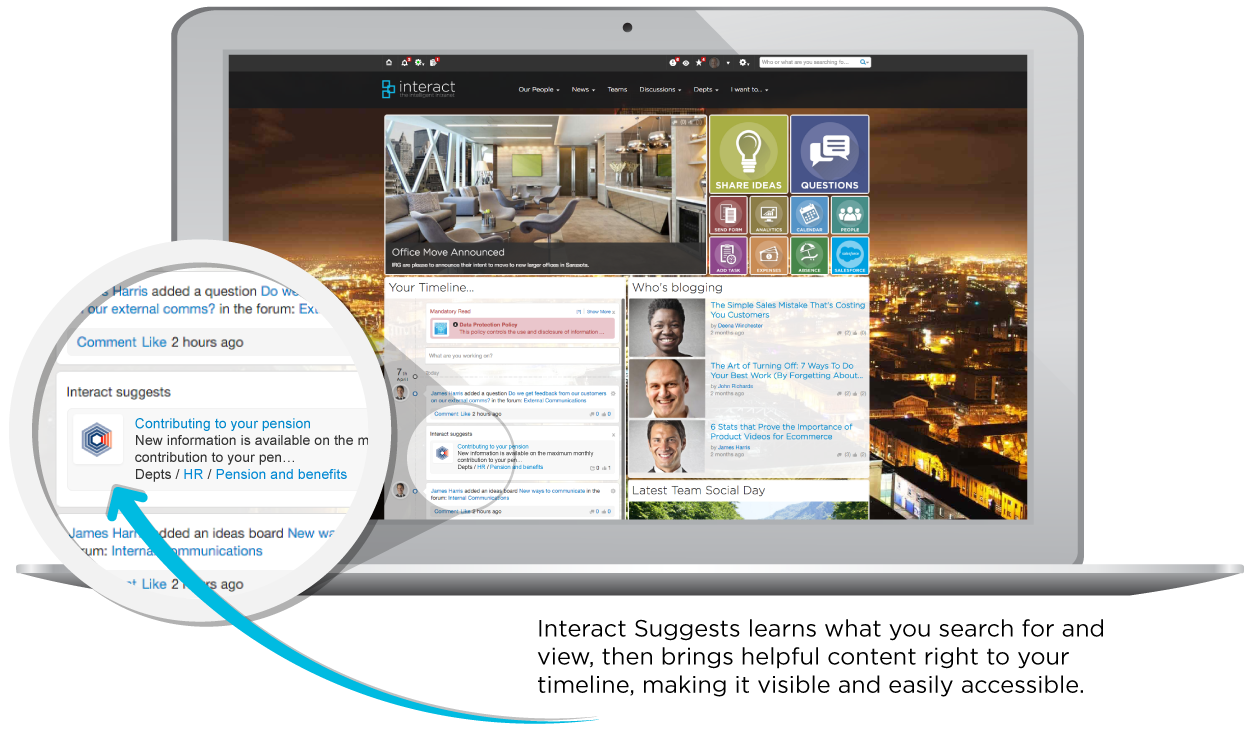5 steps to uncovering the hidden knowledge in your organization
The extent to which companies now capture and learn from user data is incredible. Think of Netflix’s recommendation tool or, even more impressive, the 2.5 petabytes of data Walmart reportedly collected each hour from customer transactions in 2012 (2.5 petabytes is roughly equivalent to 50 million filing cabinets of text). With all that knowledge floating around in quantifiable, analyzable form, businesses everywhere should be asking how else they can use it. It pays to not only look at external intelligence but internal – using social intranets to break down silos and learn about collaboration within an organization. Every organization has hidden knowledge that can be uncovered to improve productivity and give employees the tools they need to excel at their jobs. Here are the 5 steps to uncovering and using that hidden knowledge.

Digital proliferation in the workplace brings with it an abundance of tools from which workers can choose. While many of these have the potential to change work for the better, they lose some of their power through their disconnectedness. Using disparate tools, teams miss an intelligence opportunity. By choosing a single platform that hosts all the tools you need, a centralized collaboration service such as a social intranet, you give yourself the advantage in the realm of intelligence. These centralized hubs drive your digital workplace by integrating with key enterprise software applications, pulling information from those into one central location. Using an intranet with an intelligent search, for example, can help you learn what terms employees are looking for and what tools they lack. Not only do employees have a seamless work experience that allows them to perform to the highest of their capabilities with less effort upfront, all institutional knowledge is now captured and recorded on one localized platform. Knowledge is easier to access, after all, if you don’t need to hunt for it. With potentially petabytes or more of data floating around, hunting for knowledge across systems makes searching for a needle in a haystack seem an inadequate metaphor. Utilizing a centralized collaboration service allows you to stay organized and easily find what you need.


So you’ve moved all your processes and communications into a central location. You’ve got analytics capabilities and the technology to sift through all the data and documents your organization creates on a regular basis. What next? You likely have mounds of unsorted data on your intranet, and even if you have access to analytics that organize that data for you, that’s not a magic bullet. Most important is knowing what questions to ask. This is where you connect the immense knowledge you’ve been granted to the reality of your day to day tasks, of your team’s challenges and triumphs. While analytics may be one size fits all, your questions should be specific. What projects are active right now, and what are the biggest collaboration challenges you face? What are several alternative ways to solve those challenges? What tools or knowledge does your team lack that could make a difference in their success? Even these questions are generic, but adding detail and putting them into practice is how great leaders drive success. Once you know what questions to ask, you’re able to look at your data with fresh eyes and find the answers you need.

Not all data lives in quantifiable form, as points to be measured by an analytics tool. Institutional knowledge can be in documents, and it also can be in the minds of colleagues. No technology is able to mine a coworker’s head per se, but it can get you much closer to that level of access. Your company’s intranet should make use of an intelligent search feature to help you uncover hidden knowledge. A powerful search tool will not only bring results most likely to be helpful to the top of your search, it will learn the unique language of the organization through employee search behavior and help to direct you. It can even correct typos in company specific jargon. Another way of searching comes when you need to find people with specific skills, rather than documents with specific information. Intranet searches can also allow you to search by knowledge or skill, displaying people who possess those traits in the results. Someone you may have not even known to exist may possess exactly the aptitude you need to help your team on a big project. Don’t let that go to waste.


Teams can implement all of these suggestions but still not be fully utilizing their intelligence opportunities. It takes conscious effort to make knowledge a part of overall strategy. This may sound obvious, but considering that new types of technology and data are available all the time, you have to break away from a set routine and methodology in order to incorporate them. This should be a part of every team meeting, and better yet you can democratize meetings by inviting participation from all team members. They may recognize something new in the data or ask a question that no one realized needed to be asked. This brings us to our last point.


As we mentioned before, asking the right questions is an invaluable piece of the knowledge puzzle. We all are human, however, and no one is able to ask every potential question or look at a problem from every angle. It’s important to realize that and challenge yourself to constantly reposition – ask new questions, look at your strategy with fresh perspective. The challenges of business shift from project to project after all. As companies accumulate more and more data (not to beat a dead horse, but petabytes!), the number of potential questions to ask becomes infinite, or at least uncountably high. Who knows what you can discover by asking the right one? New knowledge is out there and waiting to be uncovered, which may give your team, or your whole organization, a breakthrough. Never stop asking, never stop searching.

Leaders have traditionally been senior members of a company who are capable of making decisions based on what they’ve learned through experience. Though that is a sound method of decision making, to some extent leaders still listen to their guts. Might this be changing thanks to technology and data? The concepts of leadership and experience are not going anywhere, but might leaders become the people with a refined sense of what questions to ask and where to search? Might experience be years of examining new questions and perspectives? Teams now have quantifiable results to aid the decision making process. Those who use the technological tools we now have at our disposal in the smartest way will become the most successful leaders moving forward.
